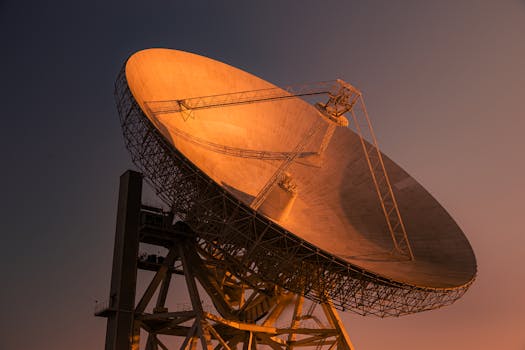Satellite Telecommunications 2023: Key Developments and What They Mean for the Industry

Satellite Telecommunications 2023: Key Developments and What They Mean for the Industry
The satellite telecommunications industry has experienced remarkable growth and innovation in 2023, driven by advancements in technology, increasing demand for global connectivity, and the need for resilient and secure communication networks. As we delve into the key developments of 2023, it becomes clear that these advancements will have a profound impact on the industry, enabling new opportunities, improving existing services, and paving the way for future expansions.
Technological Advancements
One of the most significant developments in the satellite telecommunications industry in 2023 has been the launch of new satellite constellations. These constellations, comprising hundreds to thousands of satellites, are designed to provide global coverage, high-speed internet, and a range of other communication services. The development of these constellations has been driven by companies such as SpaceX, Amazon, and OneWeb, which are investing heavily in the creation of low-Earth orbit (LEO) satellite systems. These systems offer several advantages over traditional geostationary satellites, including lower latency, higher speeds, and greater flexibility.
Another key technological advancement in 2023 has been the development of advanced satellite antennas and user terminals. These devices are crucial for communicating with satellites and are being designed to be smaller, more efficient, and more cost-effective. The development of flat-panel antennas, in particular, has been significant, as they offer a compact and lightweight solution for satellite communication. This technology has the potential to enable the widespread adoption of satellite connectivity, particularly in areas where traditional communication infrastructure is lacking.
Market Trends and Opportunities
The satellite telecommunications market has experienced significant growth in 2023, driven by increasing demand for global connectivity, particularly in the maritime, aviation, and rural broadband sectors. The need for resilient and secure communication networks has also driven growth, as organizations and governments seek to mitigate the risks associated with traditional communication infrastructure. The development of new satellite constellations and advanced user terminals has created new opportunities for satellite service providers, which are now able to offer a range of services, including broadband internet, voice, and data communication.
The growth of the satellite telecommunications market has also been driven by the increasing adoption of satellite-based Internet of Things (IoT) services. Satellite-based IoT services enable the connection of devices in remote or hard-to-reach areas, where traditional communication infrastructure is lacking. This has significant implications for a range of industries, including agriculture, transportation, and energy, where IoT devices can be used to monitor and manage assets, track shipments, and optimize operations.
Challenges and Future Directions
Despite the significant developments and growth in the satellite telecommunications industry in 2023, there are several challenges that need to be addressed. One of the key challenges is the issue of regulatory frameworks, which are often fragmented and inconsistent across different countries and regions. This can create barriers to entry for new satellite operators and make it difficult to provide seamless and global communication services. There is a need for more harmonized and flexible regulatory frameworks that can accommodate the rapidly evolving satellite telecommunications industry.
Another challenge facing the industry is the issue of space debris and sustainability. The launch of thousands of new satellites in recent years has raised concerns about the impact on the space environment and the potential for collisions and debris. There is a need for more sustainable and responsible approaches to satellite operations, including the development of debris-removal technologies and more efficient satellite designs. The industry is also exploring new technologies, such as satellite-based solar power and in-orbit servicing, which have the potential to reduce the environmental impact of satellite operations.




